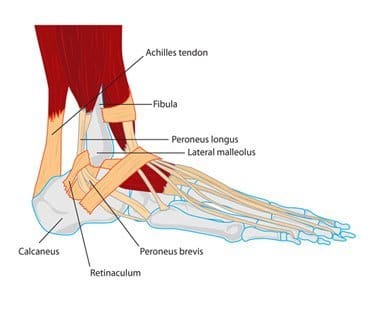Peroneal Tendon Subluxation
Tendons are strong white bands of fibrous tissue that connect muscles to bones. As a muscle contracts, it pulls the tendon, which in turn pulls the bone to which it is attached and this carries out the movement of the skeleton.
Tendon subluxation refers to a condition in which the tendon slips out of its normal position during movement; however, it relocates itself back to its normal position. When the tendon fails to relocate itself to its normal position the condition is called tendon dislocation or subluxation.
The peroneal tendons belong to the two peroneal muscles located on the outer side of the lower leg. The two tendons travel downward along the outer side of the ankle, passing behind the outer bump of the ankle. From here the tendons angle forward and pass under the foot where they attach to the lower surface of the bones of the midfoot (metatarsals). As the muscles contract, the tendons pull the foot downward (plantarflexion) and outward (eversion).











